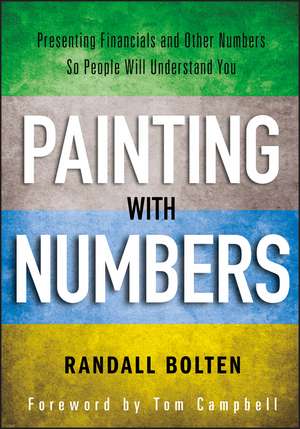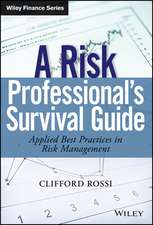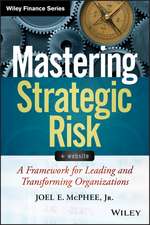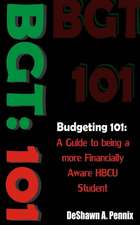Painting with Numbers: Presenting Financials and Other Numbers So People Will Understand You
Autor Randall Bolten Cuvânt înainte de Tom Campbellen Limba Engleză Hardback – 18 apr 2012
Preț: 245.24 lei
Nou
Puncte Express: 368
Preț estimativ în valută:
46.93€ • 48.99$ • 38.84£
46.93€ • 48.99$ • 38.84£
Carte disponibilă
Livrare economică 14-28 martie
Preluare comenzi: 021 569.72.76
Specificații
ISBN-13: 9781118172575
ISBN-10: 1118172574
Pagini: 352
Ilustrații: Illustrations
Dimensiuni: 178 x 254 x 20 mm
Greutate: 0.89 kg
Editura: Wiley
Locul publicării:Hoboken, United States
ISBN-10: 1118172574
Pagini: 352
Ilustrații: Illustrations
Dimensiuni: 178 x 254 x 20 mm
Greutate: 0.89 kg
Editura: Wiley
Locul publicării:Hoboken, United States
Public țintă
Finance professionals, especially in financial planning and accounting, in corporations, who need to produce information and reports quickly and effectively. Business students, both undergraduates and MBAs. CPAs, particularly with the larger firms. Other professional people, including lawyers, consultants, salespeople, and many others. For all of them, presenting numbers is a relatively small part of their job, but when they do have to present numbers the stakes are high. Senior executives, such as CEOs, CFOs, board members, and senior partners at law, accounting, and other professional firms. The audience for quantitative information, the vast array of people who consume this kind of information and are frustrated by how difficult it is to understand.Cuprins
Foreword xiii Preface xv Acknowledgments xvii introdUCtion This book Is Not About Numbers--Honest! 1 Being "Literate" 2 It's What They Think That Matters 2 What You Were Never Taught 3 The Ultimate Goal 5 Some Notes about Reading This Book 5 Part I the rules 11 Chapter 1 Numerals Matter 13 Lining Up the Numbers 14 The Units of Measure 16 Precision 17 Negative Numbers: What Do They Mean? 20 Chapter 2 Looks Matter 25 The Tabula Rasa Decision 26 The "Where's Waldo?" Effect 27 White Space Is Your Friend 29 But White Space Is Not Always Your Friend 30 Time and Other Dimensions: Across or Down? 33 Borders, Shading, and Other Visual Effects 35 Comments and Artwork 41 The "Ransom Note" Effect 43 Two Truly Helpful Hints 44 Chapter 3 Words Matter 47 Mean What You Say and Say What You Mean 48 Choosing between Precision and Presentability 52 Treating Words Like Numbers 55 Remember the Title. Please 57 Chapter 4 Your Audience Matters 61 The Right Amount of Data 62 Appropriate Emphasis on Critical Information 64 Consistency 67 Meaningful and Relevant Numbers 69 Respect for Your Audience's Time 73 Wrap-Up for Part I: The Rules 77 Part II The Tools 81 Chapter 5 You Can Pay Me Now 83 The Instant Payoff Tips 85 Instant Payoff Tip #1: Set Up Templates and Styles 85 Instant Payoff Tip #2: Customize Your Toolbar 86 Instant Payoff Tip #3: Learn Some Shortcut Keys 87 Instant Payoff Tip #4: Use Consistent Formats 89 Instant Payoff Tip #5: Learn to Use Excel as a Database 90 Instant Payoff Tip #6: Learn to Use the Lookup & Reference Functions 94 Instant Payoff Tip #7: Organize Data for Easy Computation 95 Instant Payoff Tip #8: Learn to Use Automated Help 98 Instant Payoff Tip #9: Don't Learn Too Many Ways to Do the Same Thing 99 Chapter 6 . . . Or Pay Me Later 103 The Long-Term Payoff Tips 104 Long-Term Payoff Tip #1: Use Sensible, Intelligent Filenames and Folder Organization 104 Long-Term Payoff Tip #2: Use Consistent Formats 106 Long-Term Payoff Tip #3: Design Intelligent, Intelligible Formulas 106 Long-Term Payoff Tip #4: Use Named Ranges 110 Long-Term Payoff Tip #5: Use Named Formulas or Macros 112 Long-Term Payoff Tip #6: Links: A Force That Can Be Used for Good or Evil 117 Long-Term Payoff Tip #7: Make Different Types of Cells Visually Distinguishable and Physically Separate 118 Long-Term Payoff Tip #8: Document Your Work! 120 Long-Term Payoff Tip #9: Check Your Work! 121 Long-Term Payoff Tip #10: Avoid Cool New Features 122 Chapter 7 Graphs: The "Cartoons" of Numbers 125 Why Do People Use Graphs? 126 Help Your Audience 127 First, Do No Harm 138 Chapter 8 The Pitfalls of Presentations and PowerPoint 153Why Do People Make Fun of Business Presentations? 154 Real Estate Is a Scarce and Precious Commodity 154 Help Your Audience 156 First, Do No Harm 161 Some Basic Truths That Go Double for Quantation 162 Wrap-Up for Part II: The Tools 166 Part III Real Mastery 169 Chapter 9 It's Clear, but Is It Meaningful? 171 The War of the Adjectives 171 A Quantation Professional 173 Relating to Your Audience in a Constructive Way 174 Chapter 10 53 . . . Uh, Is That a Lot? 179 What Is a Key Indicator? 180 What Makes a Good Key Indicator? 183 A Simple Example 185 How Do You Present Key Indicators Effectively? 185 A Note on Precision 190 A Note on Dashboards 191 Chapter 11 The One Report Every Organization Needs 197 A Sample Natural P&L, and What Makes It a Good One 199 1. One Page! 200 2. Decision-Focused Line Items 200 3. Appropriate Dollar Amounts, neither Too Big nor Too Small 204 4. Intuitive Organization of the Line Items 205 5. Understandable Categories, Meaningful to All Users 208 6. Plain-English Terminology 208 7. Consistent Look-and-Feel 209 8. Key Results Equal to the Corresponding Numbers in the Accounting System (or an Explanation Why Not) 209 Mapping the Chart of Accounts 211 Generate a Natural P&L from a Spreadsheet, or from the Accounting System? 212 Now Let's Talk about the Columns 213 Appendix 11A a Sermon to the Accounting Purists 219 Chapter 12 The Gaps in GAAP 225 Rules-Based versus Principles-Based 226 Where Is All This Headed? 227 "Expensing" Stock Options 228 Software Revenue Recognition 230 Tying GAAP to Internal Management Reports 232 Appendix 12A Some Notes on GAAP 235 What Is GAAP? 235 Stock Options 236 Revenue Recognition 237 Chapter 13 Quantation: It's Not Just for Business Anymore 239 One Taxpayer at a Time 240 All the Taxpayers at Once 243 What's Really Going on Here? 249 Chapter 14 Quantation in Ordinary Life 255 Models 255 The Meaning of Words 260 That Quiz I Promised 263 Part IV Wrap-Up 269 Chapter 15 Speaking Truth to Power 271 My "Tell the Truth" Syllogism 272 Reason #1 for Telling the Truth: It's the Right Thing to Do 272 Reason #2: It's in Your Employer's Interest 272 Reason #3: It's in Your Interest 273 Reason #4: You Will Get Caught 273 Reason #5: It's the "Gotcha" of This Book 275 Don't Be So Smug, You Civil Servants and Elected Officials! 276 Your Audience Has a Role, Too 276 Chapter 16 Now, What's the First Thing You Do? 281 My Last, Best Tip 282 It's Just a Skill 282 Where We Have Been 283 Appendix Jazz Meets Theology 287 Revisitation 288 The Sins of Presentation 289 The Sins of Behavior 297 The Deadliest Sin of All 301 About the Author 305 Index 307
Notă biografică
RANDALL BOLTEN operates a consulting practice focused on financial management and information presentation. He is a seasoned and accomplished finance executive, with thirty years of experience in high-growth and high-potential Silicon Valley companies. His professional passion is presenting information that can enable managers, investors, and the general public to make real sense of complicated situations. He holds a Bachelor of Arts degree from Princeton University and an MBA from Stanford University.
Descriere
Learn how to communicate better with numbers Whether you are distributing a report or giving a presentation, you have a lot of numbers to present and only a few minutes to get your point across. Your audience is busy and has a short attention span.



















